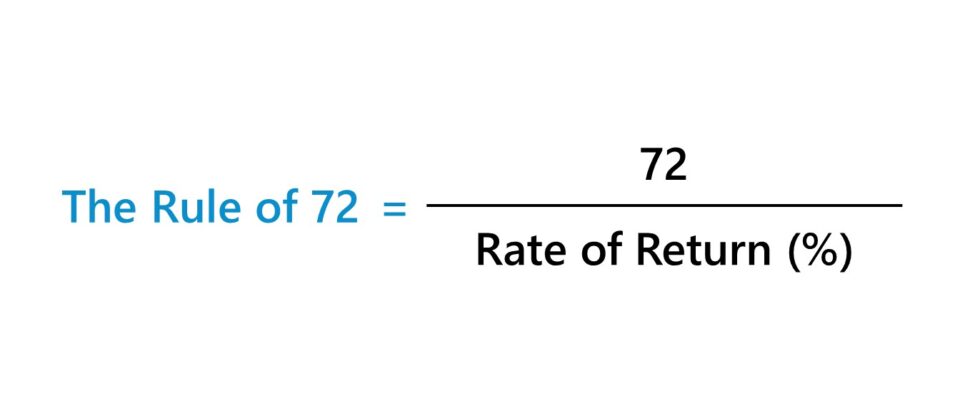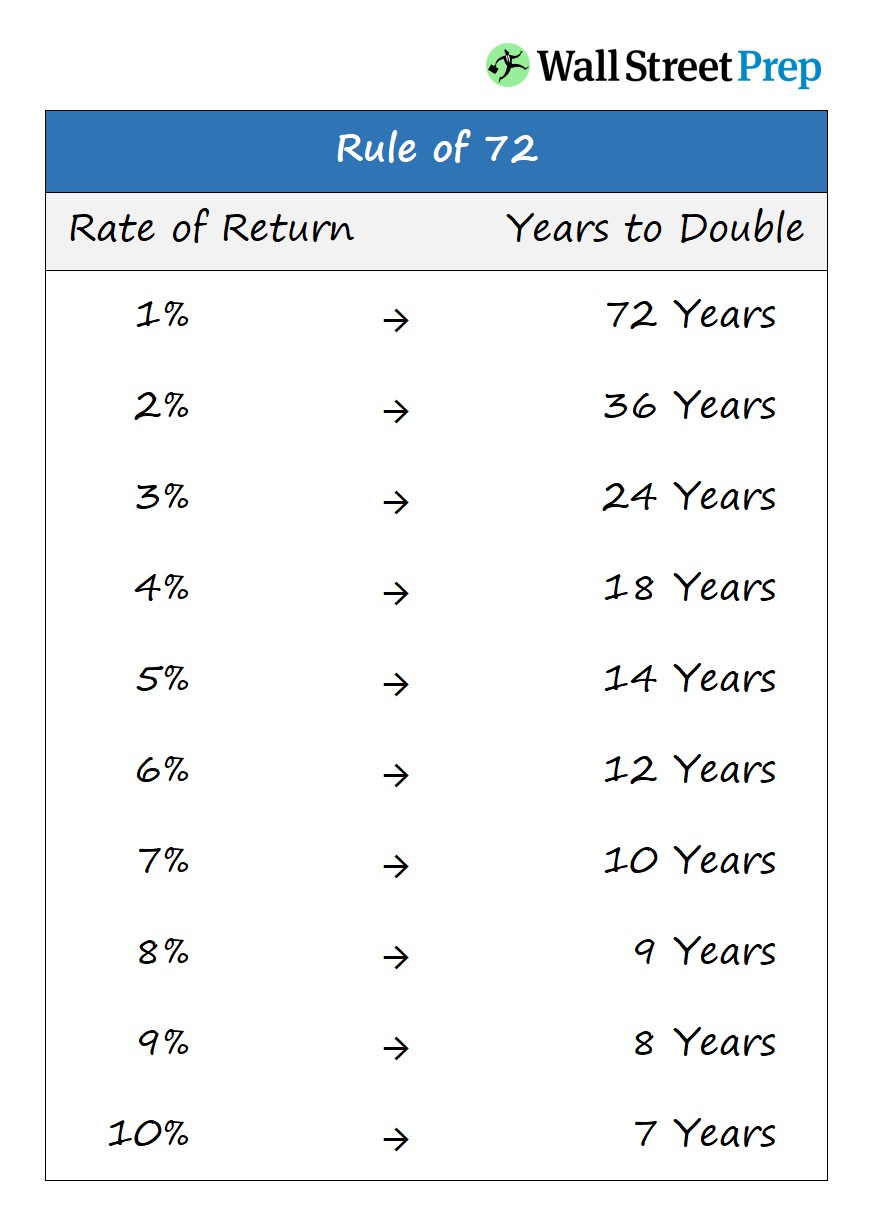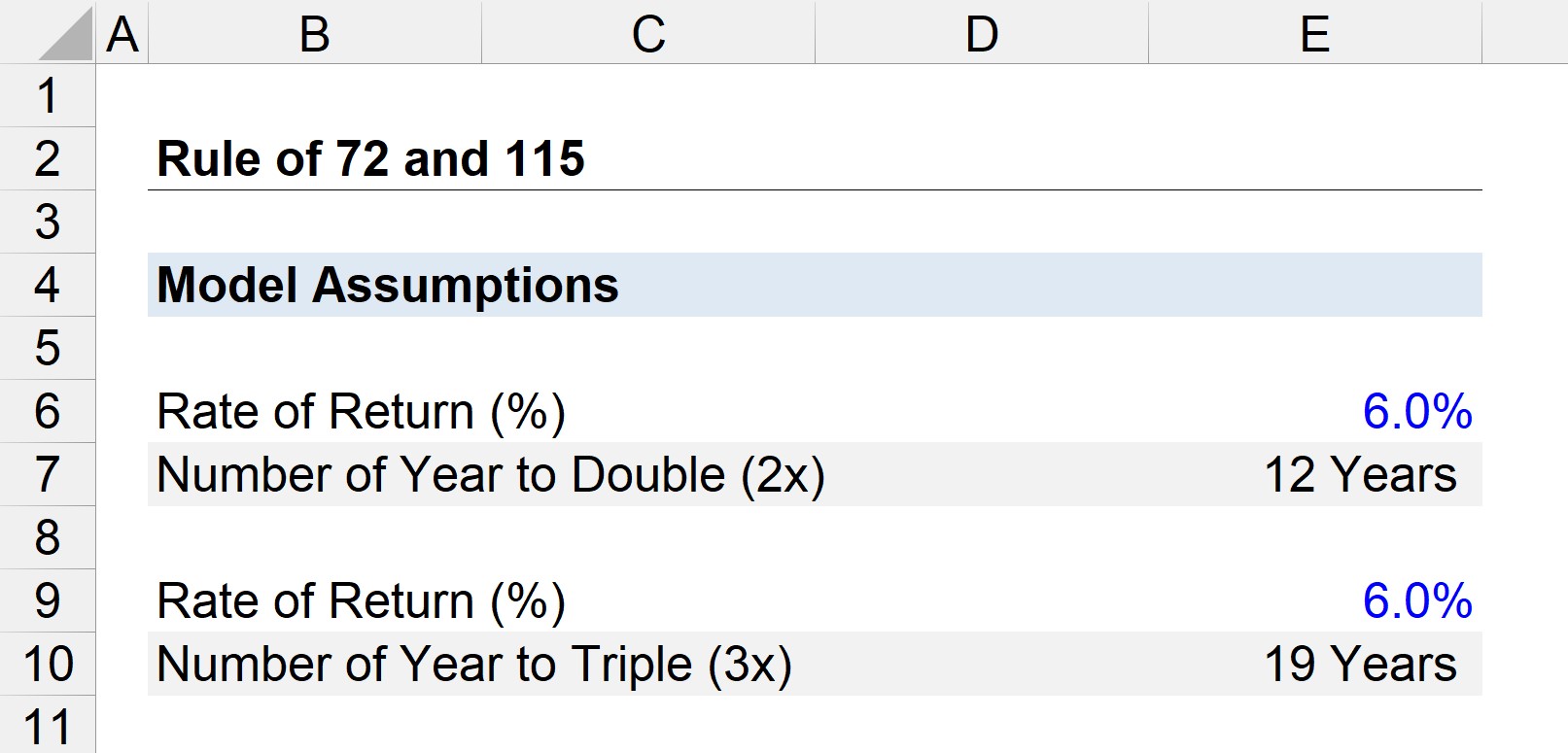What is the Rule of 72?
The Rule of 72 is a shorthand method to estimate the number of years required for an investment to double in value (2x).
In practice, the Rule of 72 is a “back-of-the-envelope” method of estimating how long it would take an investment to double given a set of assumptions on the interest rate, i.e. rate of return.

- The Rule of 72 is a quick method to estimate the time needed for an investment to double in value.
- The Rule of 72 is calculated by dividing 72 by the annualized interest rate (i.e. the rate of return).
- Luca Pacioli, an Italian mathematician, is often credited with coming up with the Rule of 72 – albeit, there is uncertainty around its origins.
- The Rule of 72 is a reliable approximation intended for "back-of-the-envelope" math, but the estimated number of years is still a mere approximation at the end of the day.
How to Calculate the Rule of 72
The Rule of 72 estimates the time needed to double the value of an investment.
The Rule of 72 is a convenient method to estimate the approximate time for invested capital to double in value.
By merely taking the number 72 and dividing it by the rate of return (or interest rate) expected to be earned, the output is the approximate number of years for an investment to double.
Therefore, the Rule of 72 is a “back of the envelope” estimate of the time to double an investment, yet the method produces a relatively accurate figure.
On that note, using Excel (or a financial calculator) is recommended for a more precise figure, especially in higher stake circumstances.
The Rule of 72 is well-known in finance and is perceived by most as a general rule of thumb to estimate the number of years that it would take an investment to double in value.
Yet, despite the simplicity of the calculation and convenience, the methodology is rather accurate, within a reasonable range.
The Rule of 72 Formula
The formula for the Rule of 72 divides the number 72 by the annualized rate of return (i.e. the interest rate).
Thus, the implied number of years for the investment’s value to double (2x) can be approximated by dividing the number 72 by the effective interest rate.
However, the effective interest rate used in the equation is not in percentage form.
Illustrative Rule of 72 Example
For example, if an investor – i.e. a limited partner (LP) of the fund — decided to contribute $200,000 to an active investor’s fund.
According to the firm’s marketing documents, the normalized return should range around 9% approximately, i.e. the 9% is the set return targeted by the fund’s portfolio of investments over the long term (and various economic cycles).
If we assume the 9% annual return is in fact achieved, the estimated number of years for the original investment to double in value is roughly 8 years.
- Number of Years to Double (n) = 72 ÷ 9 = 8 Years
The Wharton Online and Wall Street Prep Private Equity Certificate Program
Level up your career with the world's most recognized private equity investing program. Enrollment is open for the Feb. 10 - Apr. 6 cohort.
Enroll TodayThe Rule of 72 Chart
The chart below provides the approximate number of years for an investment to double.
The left column lists the rate of return – from 1% to 10% – while the right column lists the number of years it would take for the investment to double in value based on the corresponding return.
Compound Interest vs. Simple Interest: What is the Difference?
The Rule of 72 only applies to cases of compound interest, rather than simple interest.
- Simple Interest → The accumulated interest to date is not added back to the original principal amount.
- Compound Interest → The interest is calculated based on the original principal, as well as the accumulated interest incurred from prior periods (“interest on interest”).
Rule of 72 Calculator
We’ll now move on to a modeling exercise, which you can access by filling out the form below.
The Rule of 72 Calculation Example
Suppose an investment earns 6.0% each year.
Q. Given the 6.0% rate of return, how many years will it take for the value of the investment to double?
If we divide 72 by 6, we can calculate the number of years it would take for the investment to double.
- Implied Number of Years to Double (2x) = 72 ÷ 6 = 12 Years
In our illustrative scenario, the investment should double in value around 12 years.
The Rule of 115 Calculation Example
There is also a related but lesser-known rule, called the “Rule of 115”.
By dividing 115 by the rate of return, the estimated time for an investment to triple (3x) can be calculated.
Continuing off the previous example with the 6% return assumption:
- Implied Number of Years to Triple (3x) = 115 ÷ 6 = 19 Years









You can also estimate the IRR by using the Rule of 40M, where the IRR is [40 * M / No. of Years]. Find out more: https://www.youtube.com/watch?v=aCHFgOCX1hU
Rule of 72 formula offer you to have simple calculation where you can solve your equation of doubling the investment time period.